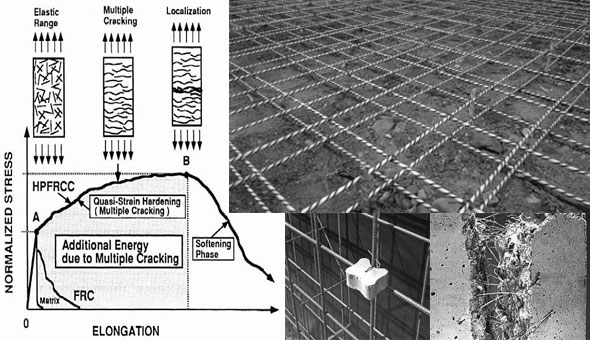Categories of FIBRES in Fiber-reinforced concrete
- Concrete Cost Estimator
- Concrete Continuous Footing
- Landscape Bidding and Estimating
- Construction Cost Estimating
- Concrete and steel cost estimation
- Construction Cost Estimate Breakdown
- Construction Estimating Worksheet
- Home Construction Cost Estimate
- Estimate Pricing Sheet
- Sheet for General Contractor
- Construction Cost Estimate
- Labor Materials Cost Estimator
- Masonry Estimating Sheet
- Sheet for Building Contractor
- Construction Schedule Bar chart
- General Cost Estimator Sheet
- General Construction Estimate
- Building and Road Estimating Sheet
- Detailed expense estimates
- Door and Window Takeoff Sheet
- General Construction Cost Estimating Sheet

Fiber-reinforced concrete is formed by blending various other materials with the liquid cement to reinforce the concrete structure. These fibers facilitate the concrete to become powerful as well as withstand severe temperature. They also make the concrete extremely water-tight. There exist four different types of fiber-reinforced concrete which range from steel fiber, glass fiber, synthetic fiber and natural fiber reinforced concrete.
1. Steel Fiber-Reinforced Concrete: Steel fiber-reinforced concrete mainly refers to an inexpensive and easily applicable form of rebar reinforced concrete. Rebar reinforced concrete consists of steel bars which are placed inside the liquid cement to enhance the longebility of concrete. Steel fiber-reinforced concrete contains thin steel wires combined with the cement. This passes on superior structural strength into concrete as well as curtails cracking and safeguards against severe cold. Steel fiber is frequently applied in combination with rebar or one of the other fiber types.
Glass fiber-reinforced concrete applies fiberglass to reinforce the concrete. The glass fiber facilitates to insulate the concrete other than increasing its strength. Glass fiber safeguards the concrete against cracking in due course of time because of mechanical or thermal stress. Besides, the glass fiber does not intervene with radio signals same as the steel fiber reinforcement performs.
3. Synthetic Fibers: Synthetic fiber-reinforced concrete combines plastic and nylon fibers to make concrete powerful. Besides, the synthetic fibers offer huge advantages over the other fibers. Synthetic fibers are so powerful as compared to steel, but they allow to enhance the pumpability of cement by resisting it from being stucked in the pipes. The synthetic fibers are not expandable in heat or compressed in the cold which in turn stop cracking. Lastly, synthetic fibers facilitate the concrete to be unaffected from spalling in impacts or fires.
4. Natural Fiber Reinforced Concrete: Traditionally, fiber-reinforced concrete utilizes natural fibers like hay or hair. Though these fibers make the concrete stronger but if used for a long time, the strength of the concrete becomes lower. Besides, if the natural fibers are decaying at the time of being blended, then the rot can persist even in the concrete. This ultimately results in concrete crumbling from the inside. Therefore, natural fibers are not now utilized in construction.
Benefits of fibres: Polypropylene and Nylon fibers-
· Enhance mix cohesion and improved pumpability across long distances
· Make freeze-thaw resistance superior
· Enhance resistance to explosive spalling for a rigorous fire
· Make impact resistance power greater
· Improve resistance to plastic shrinkage at the time of curing
Steel fibers:
· Make structural strength better
· Lowered the necessities of steel reinforcement
· Enhance ductility
· Decrease crack widths and check crack widths thus enhance stability
· Enhance impact & abrasion resistance
· Make freeze-thaw resistance power better

Ref.: startitnew.blogspot.in
- Application of concrete calculator
- Roofing Calculator can streamline the roof estimating process
- House construction cost calculator
- Engineering column design excel spreadsheet
- Material Estimating Sheet with Excel
- Materials List and Cost Estimate Worksheet
- Concrete Slab Estimating Calculator Sheet
- Common types of foundations for buildings
- Online calculation of construction materials
- Estimating with Excel for the Small Contractor
- Concrete Beam Design Spreadsheet
- Virtual Construction Management app for construction
- Autodesk’s Project Skyscraper
- Reed Construction’s Reed Insight
- Manage your construction project documentation
- Costimator, the popular cost estimating software
- On Center Software for construction professionals
- Free Construction Estimating Software
- Plumbing Calc Pro
- Cost Estimate Worksheet
- HVAC Piping Quantity Takeoff Worksheet
- Construction Estimating Software Sheet
- Estimate Cost Templates
- Construction Punch List
- Construction cost estimating template consisting estimating basic
- Gantt Chart Template for Excel
- Download Civil Engineering Spreadsheets with Verification
- The Building Advisor Estimating and Budgeting Worksheet
- Spreadsheet for design of concrete bridge
- Construction Estimating Software Free








